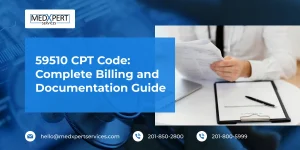Are you confident that your post-operative procedures are accurately billed for reimbursement? Correctly applying Modifier 78 is crucial for healthcare providers who want to ensure they’re reimbursed for unplanned returns to the operating room due to complications from a previous surgery. This modifier not only affects the financial aspects of your practice but also ensures compliance with insurance guidelines. However, improper use can lead to claim denials or delayed payments.
In this article, we’ll walk you through everything you need to know about Modifier 78, including when to use it, how it impacts global surgery periods, and what documentation is necessary to support your claims.
What is Modifier 78?
Modifier 78 is a CPT code modifier used to indicate that a patient required an unplanned return to the operating or procedure room during the postoperative period of their initial surgery. This modifier is crucial for reporting complications that arise after surgery, such as infections, bleeding, or surgical site issues, that require immediate surgical intervention.
It helps insurance payers recognize that the second procedure was not elective, but medically necessary due to unforeseen complications. Modifier 78 is part of a set of post-operative modifiers, including Modifier 58 (used for staged or planned surgeries) and Modifier 79 (used for unrelated procedures within the global surgery period).
Key Points to Remember:
- Unplanned Return: The second surgery must be related to complications from the original procedure.
- Global Surgery Period: Modifier 78 does not reset the global surgery period, meaning the timeline for postoperative care remains unchanged.
- Reimbursement Impact: Providers typically receive up to 80% reimbursement for the second surgery.
When to Use Modifier 78
Knowing exactly when to use Modifier 78 is essential for accurate billing and reimbursement. The modifier should be applied when the following conditions are met:
Complications During the Postoperative Period
The return procedure must be necessary to address a complication that arises during the postoperative period, which can include:
- Infections: Surgical site infections or other infections related to the initial procedure.
- Hemorrhages: Postoperative bleeding or hemorrhaging requiring immediate surgical intervention.
- Wound Dehiscence: Rupture or failure of a surgical incision to properly close.
Unplanned Return to Operating Room
The complication must require a surgical procedure performed in the operating or procedure room. If the patient is treated outside of the operating room, Modifier 78 should not be used.
Performed by the Same or Qualified Healthcare Provider
The second surgery must generally be performed by the same physician or another qualified healthcare provider. In some cases, payer guidelines may vary, so it’s crucial to check payer-specific policies for reimbursement.
Failing to meet any of these criteria could result in claim rejections or improper reimbursements.
Examples of Modifier 78 in Action
Treating a Post-Surgical Infection
Infections are a common complication after surgery, affecting approximately 1-3% of surgical patients. When a surgical site infection (SSI) occurs within the postoperative period, the healthcare provider may need to perform a follow-up surgical procedure, such as surgical debridement, to address the infection.
For instance, a patient who develops a bacterial infection after a hip replacement may require another operation to clean the wound or drain pus. In this case, Modifier 78 is applied to the debridement procedure to reflect the complication.
Stopping Hemorrhage After Surgery
Postoperative hemorrhage is another common complication, with nearly 77.7% of these incidents occurring within the first seven days of surgery. This could be caused by faulty stitches, injury to surrounding tissues, or failure to properly secure blood vessels.
If the patient experiences bleeding that requires another surgical intervention, such as a blood transfusion or a procedure to stop the hemorrhage, Modifier 78 would be appended to the second procedure code.
Secondary Suturing of Abdominal Wall
After abdominal surgery, evisceration (the protrusion of internal organs) can occur, requiring immediate surgical intervention to correct the condition. This is often a life-threatening situation that requires the patient to return to the operating room for secondary suturing or repositioning of the organs.
Here, Modifier 78 would be used to accurately reflect the need for this unplanned surgical procedure due to a postoperative complication.
Documentation Requirements for Modifier 78
Proper documentation is crucial when submitting claims with Modifier 78 to ensure compliance with insurance requirements and secure reimbursement.
The following documents are generally required to justify the use of Modifier 78:
Physician’s Notes: The physician’s notes should clearly state that a follow-up surgical procedure was medically necessary due to a complication from the initial surgery. This should detail the specific complications and why a second procedure was required.
Lab and Test Reports: If applicable, lab or test reports should be provided to substantiate the complication, such as culture reports for infections or imaging reports showing signs of hemorrhage.
Patient’s Medical History: Documenting the patient’s medical history is vital to show any pre-existing conditions that may have contributed to the complication or made the follow-up surgery necessary.
Admission and Discharge Papers: These documents can help track the patient’s progression, confirming the dates and circumstances that led to the second surgery.
Referral Letter for Initial Surgery: Including the referral letter for the initial procedure helps verify the medical necessity of the original surgery and clarifies the relationship between the initial and subsequent procedures.
Thorough documentation ensures that the reason for the return to the operating room is clearly understood and justified, preventing claim denials and facilitating smoother reimbursement processes.
Key Dos and Don’ts for Using Modifier 78
To avoid errors in billing and ensure compliance, it’s important to follow these Dos and Don’ts when applying Modifier 78.
DOs:
- Use with Surgical Codes: Always append Modifier 78 to the appropriate CPT or HCPCS code for the second procedure.
- Include a New Diagnosis Code: Ensure that the diagnosis code reflects the complication that required the return procedure, such as infection or hemorrhage.
- Expect Partial Reimbursement: Understand that reimbursement will generally cover only the intraoperative portion of the second procedure, typically up to 80%.
DON’Ts:
- Don’t Use for Non-Operative Returns: Modifier 78 should only be applied when the patient is returned to the operating room. If the complication is treated outside the operating room, this modifier should not be used.
- Don’t Use for Unrelated Procedures: The second surgery must be directly related to the initial procedure. If the second procedure is unrelated, Modifier 79 should be used instead.
- Don’t Mix with Modifier 58 or 79: Each modifier serves a distinct purpose, and using them incorrectly can lead to claim denials.
Modifier 78 vs. Modifier 79: The Differences
While Modifier 78 and Modifier 79 both apply to procedures within the global surgery period, they serve different purposes. Understanding these differences is crucial to avoid billing mistakes and ensure accurate reimbursement.
Modifier 78:
- Subsequent Service: Used for a related procedure required due to complications from the initial surgery.
- Global Surgery Period: Does not reset the global period. The postoperative care for the original surgery continues as planned.
- Reimbursement: Typically reimbursed at a reduced rate (up to 80%) as the procedure is considered part of the original surgery.
Example: A patient undergoes knee surgery and develops a post-surgical infection, requiring debridement. Modifier 78 is used for the follow-up surgical procedure, which is related to the original surgery.
Modifier 79:
- Subsequent Service: Used for an unrelated procedure that is performed during the global period of the initial surgery.
- Global Surgery Period: Resets the global period for the second procedure, meaning the second surgery will have its own separate postoperative care period.
- Reimbursement: Typically reimbursed at the full rate, as it is considered a distinct and unrelated surgery.
Example: A patient undergoes abdominal surgery and later needs an appendectomy for acute appendicitis. Modifier 79 is used as the second surgery is unrelated to the initial procedure.
Key Difference:
The most significant difference between Modifier 78 and Modifier 79 is the relationship to the original procedure. Modifier 78 is for related follow-up procedures caused by complications from the original surgery, while Modifier 79 applies when the second procedure is unrelated and starts a new global period.
Impact on Global Period and Reimbursement
Understanding how Modifier 78 impacts the global period and reimbursement is essential for healthcare providers and billing specialists. Here’s how this modifier affects the billing process:
Global Surgery Period:
- The global surgery period refers to the time frame during which a patient is considered to be in recovery after a surgery. This period typically spans 10 or 90 days, depending on whether the surgery is considered minor or major.
- Modifier 78 does not reset the global period. This means that the global period for the original surgery continues uninterrupted, even though the patient returns to the operating room for a related follow-up procedure.
- On the other hand, Modifier 79 resets the global period because the second surgery is unrelated to the first, initiating a fresh global period for postoperative care.
Reimbursement Considerations:
- When Modifier 78 is used, the provider is typically reimbursed for the second surgery at a reduced rate, usually covering up to 80% of the cost of the second procedure. However, the exact reimbursement rate can vary depending on the payer and specific policy guidelines.
- In contrast, Modifier 79 generally leads to full reimbursement since it is for an unrelated surgery that starts a new global period.
Pro Tip:
Before submitting claims with Modifier 78, always review the payer’s specific guidelines to understand their reimbursement rates and policies, as they may vary by carrier.
Tips for Correct Usage of Modifier 78
Applying Modifier 78 accurately is key to reducing claim denials and securing appropriate reimbursement. Here are some essential tips to help you use Modifier 78 correctly:
1. Use a Different Diagnosis Code for the Second Procedure:
The diagnosis code for the follow-up procedure should reflect the complication that necessitated the second surgery. For instance, if the patient develops an infection, the diagnosis code should specify the infection rather than the condition that was treated by the original surgery.
2. Ensure Documentation Supports the Claim:
Comprehensive documentation is crucial for justifying the use of Modifier 78. Ensure that the physician’s notes, lab reports, and other relevant medical records clearly explain the need for the second procedure. Without adequate documentation, the claim may be denied.
3. Verify Payer-Specific Guidelines:
Insurance carriers can have different requirements for submitting claims with Modifier 78. Some may require additional documentation or have specific guidelines on reimbursement rates. Always check the payer’s policies to ensure your claim meets their criteria.
4. Double-Check CPT and HCPCS Codes:
Make sure the correct CPT or HCPCS codes are used for both the initial surgery and the follow-up procedure. Incorrect coding can result in claim denials or delayed reimbursements.
5. Know When Not to Use Modifier 78:
Don’t use Modifier 78 if the second procedure is unrelated to the original surgery, or if the complication can be managed outside of the operating room. In these cases, consider using Modifier 79 or another appropriate modifier.
Closing Note
Modifier 78 is a vital tool for healthcare providers when navigating the complexities of surgical billing and postoperative complications. By understanding when and how to use this modifier, you can ensure that unplanned follow-up surgeries due to complications are properly documented and reimbursed.
Accurate application of Modifier 78 helps prevent claim denials, reduces the risk of underpayment, and ensures that your practice remains compliant with insurance policies. Always be sure to review the payer-specific guidelines, document all related procedures thoroughly, and apply the modifier only when the conditions are met to ensure a smooth billing process.
















